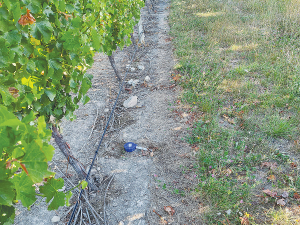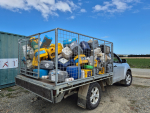Given water shortages, water use efficiency is a priority for the industry. Efficient use of water technologies not only reduces energy use and saves production costs but match the crops water requirement contributing to yield and quality improvements.
Watermetrics stepped into cropping management in the 20/21 season by installing our equipment on kiwifruit in Gisborne, vineyards in Marlborough and potatoes in Mid Canterbury.
Firstly, we installed detailed soil probes. These read both temperature and moisture at 100mm intervals and report at 15-minute intervals. The data presentation gives a clear picture of where a water application has got to in the soil profile and any overwatering becomes obvious.
Secondly, we measure the water applications, recording the amount and timing of the applications.
Thirdly, we gathered comprehensive, paddock specific, climate information – including rainfall collection. This equipment predicts the coming seven days weather, including the important evapotranspiration.
We used our partner, Swan Systems, to pull all this together and this model provided many management advantages.
We set targets for nutrient levels at each growth stage and could use the programme to modify and record applications as required.
We defined the crops required moisture levels at each growth stage. Specific agronomic information can be utilised in the settings.
The Swan Systems programme then sets a water budget depending on water volumes able to be used. It calculates the amounts of water required to meet the set targets and includes in this the predicted evapotranspiration and rainfall. It details the day and amounts to be applied.
Managers found it easy to stay within those limits and were able to keep the moisture close to requirement. This takes moisture stress out of the equation, and increases the crop’s ability to reach its potential, which is far less likely if fluctuations were allowed to occur.
From the factual information gathered, you can easily see the effects of inadequate irrigation and the difficulty of getting it back to where it should be.
There is comprehensive daily data history able to be printed out in PDF form. Analysis of this pinpoints mistakes and better ways growing.
We believe this application is a hugely beneficial and important reporting and management tool. It helps address many of the water/nutrient problem areas in crop growing, allows water and cost savings, and caters for optimal crop requirements.

















